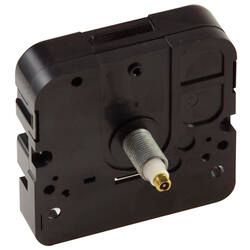Clock Parts
Digital Clock Mechanisms and also their Traits

The clock devices these days are no more mechanical however digital, deriving their force as well as accuracy from quartz crystals. These clock mechanisms are called movements in the trade, yet are also known in nonprofessional terms as electric motors. They are responsible for relocating the hands right into appropriate placement to make sure that they aim at the symbols or numbers showing up on the dial, and they do this digitally, using software program, instead of with a complex gear network.
Due to the fact that digital clock devices have a various mode of operation from the conventional ones, they are capable of features and features that can at times appear eccentric. The older method was to utilize a hefty weight or coiled spring to apply torque to a flywheel, partitioning the resulting turning using gear ratios to get angular speeds representing seconds, minutes, and hours. A pendulum, combined with an escapement, regulated the timing.
The digital motors get the exact same result, but without the large equipment. It all starts with a quartz crystal that produces a stable stream of pulses at a very quick and also exceptionally exact price. Digital registers count the pulses, as well as when different count limits are gotten to, the matching shaft increments the hand to the next placement.
In the past, anything expensive or distinctive or beyond regular required new detailed gizmos including equipments in fancy proportions. Now, software is so adaptable that forging ahead is just an issue of style and programming. So one has actually seen more points being tracked and displayed, and also useful combinations ever a lot more intriguing.
Take timekeeping expansions as an example. The traditional clock displays a 12-hour cycle, with 2 or 3 hands (i.e., with or without a second hand) rotating amongst a loads numerals equally dispersed along the dial's circumference. Prolonging the cycle to 24 hours is rather of a trait, though all that is actually needed is a printing of the numbers from 13 to 24 in about the exact same settings as the collection of 1 to 12 already inhabiting the dial.
Getting back at quirkier, one can prolong the cycle to 7 days or even a complete month. This requires even more changes in terms of equipment, needing a specifically calibrated dial, a different device, as well as a fourth hand. For the month cycle, the added hand indicate one of 31 numbers organized around the dial's perimeter, whereas for the week cycle a much shorter hand indicate one of the days of the week printed in the facility of the dial.
An actually quirky activity is one that shows the modification in tide level, which is influenced by both lunar and also solar cycles, leading to a tidal period of 24-hour as well as 50 minutes. This can be a stand-alone timepiece, or it can be integrated with a normal clock, the trend information being received the dial's facility, comparable to the day-of-the-week clock pointed out above. Tide-level systems included a control to ensure that they can be calibrated to represent resonances and also other local problems.
Going even additionally afield from standard clocks, one can obtain weather condition motions for showing such info as temperature level, humidity, or barometric pressure. These devices are not based upon crystal pulses yet include the conversion of data received from sensing units right into numerical worths within a particular variety. The corresponding hand is after that slanted to show that value on the dial.
Several of one of the most lovely quirks are holdovers from the heydays of clock building, no more important to the functioning of the device, yet eye-catching for cosmetic or timeless reasons. Such novelties include pendulums and chimes, and also several modern activities make these secondary features offered as choices. We motivate the reader to venture out into developing more heavy timepieces, now that she has a better understanding of digital clock mechanisms and also their peculiarities.
April 6th, 2020